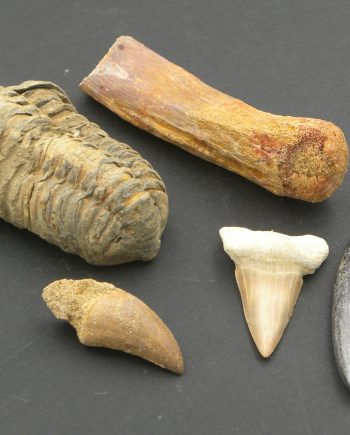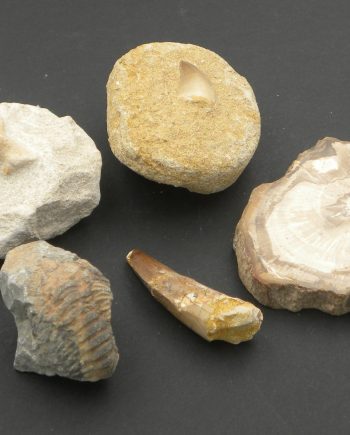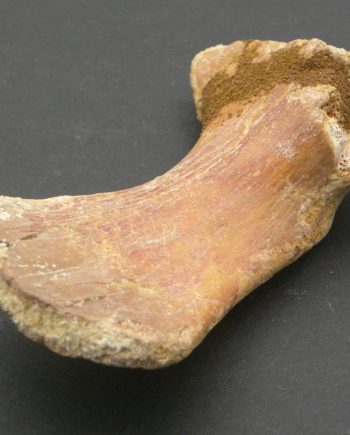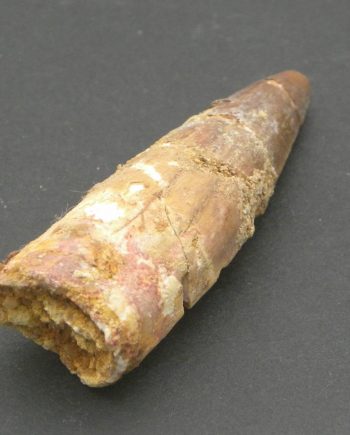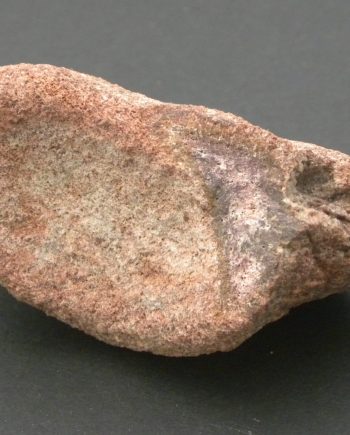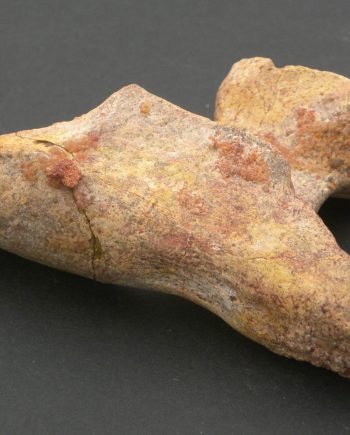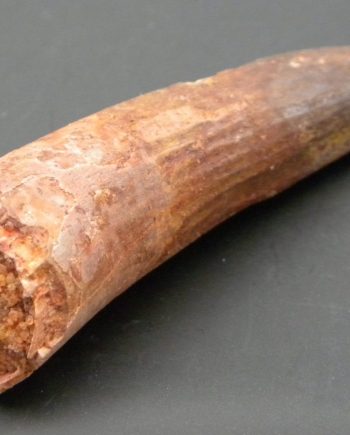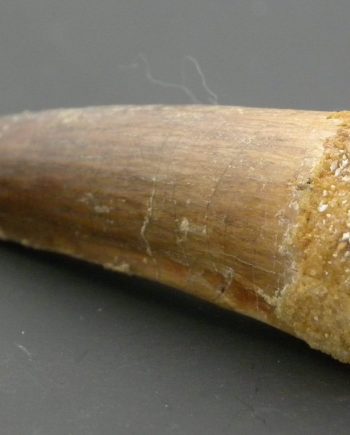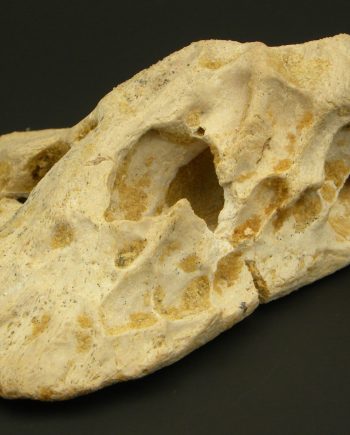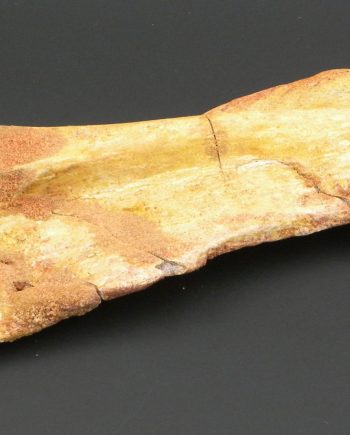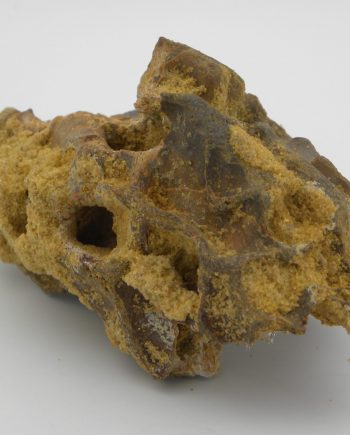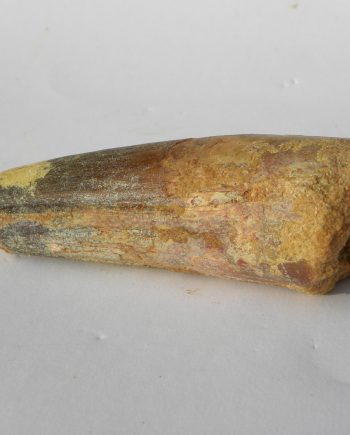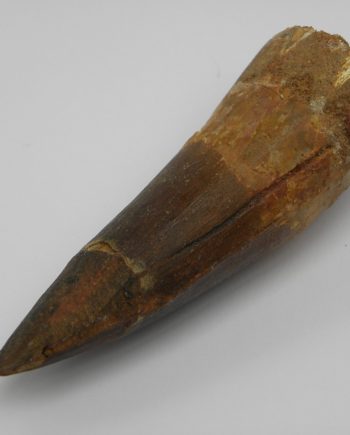Dinosaur Fossils
Dinosaur Fossils
Dinosaurs, or anything relating to them have long been the favourite fossils for children young and old. The first dinosaurs appeared in the Triassic Period approx. 240 million years ago. Over the course of millions of years they became more and more dominant. Numerous species gradually evolved until their eventual extinction 66 million years ago. Dinosaur related fossils are generally found in places that were once water or swamp-land. Shallow inland seas and also rivers and lakes would be their perfect habitat. A fertile landscape like this would also provide them with a plentiful food supply. The shallow waters, lakes and the soft mud found in these places were also the ideal conditions for creating fossils. These landscapes would have been found in every part of the world.
When these gigantic creatures died, their remains if undisturbed, would have gradually been covered by layers mud and silt. These are the very rare complete dinosaur skeletons found today. These however are in the minority. The vast majority would have provided food for carnivorous dinosaurs and other animals. Nothing would have been wasted and would have led to only small pieces of bone or teeth surviving. The dinosaur fossils we find today come in all shapes and sizes. Apart from the actual bones and teeth there are also dinosaur eggs, and even footprints.
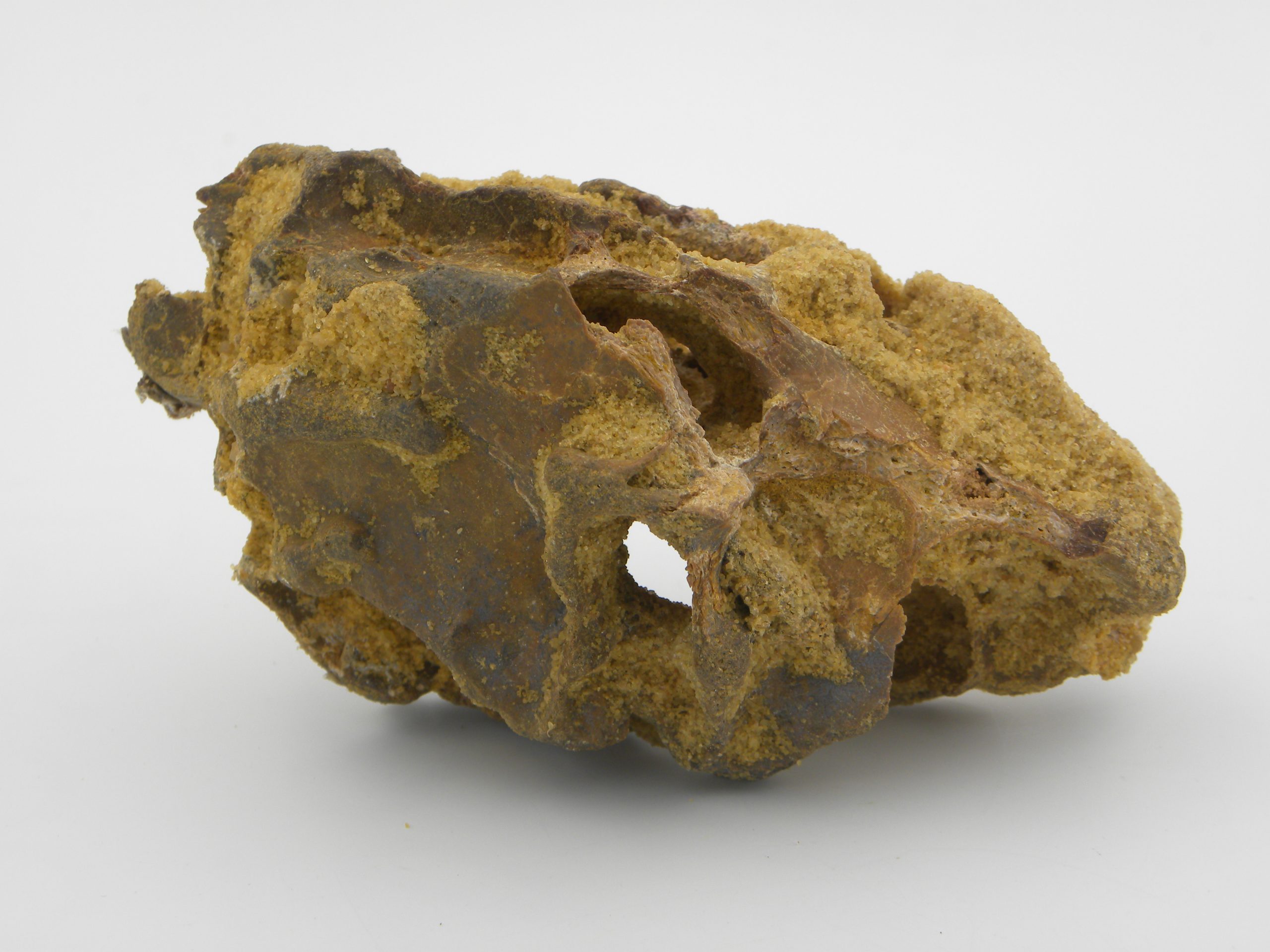
-
Starter Fossil Collection
-
Fossil Collection
-
Moroccan Dinosaur Bone
-
Fossilised Dinosaur Tooth, Spinosaurus
-
Section Of Fossilised Dinosaur Bone
-
Section of Dinosaur Bone
-
Fossilised Dinosaur Tooth 6.8cm
-
Dinosaur Tooth Spinosaurus Tooth 6.7cm
-
Fossilised ‘Dinosaur’ Bone
-
Fossilised Dinosaur Bone
-
Fossilised Dinosaur Bone (sauropod vertebrae core)
-
Large spinosaurus tooth 9cm
-
Large Fossilised Dinosaur Tooth Spinosaurus


